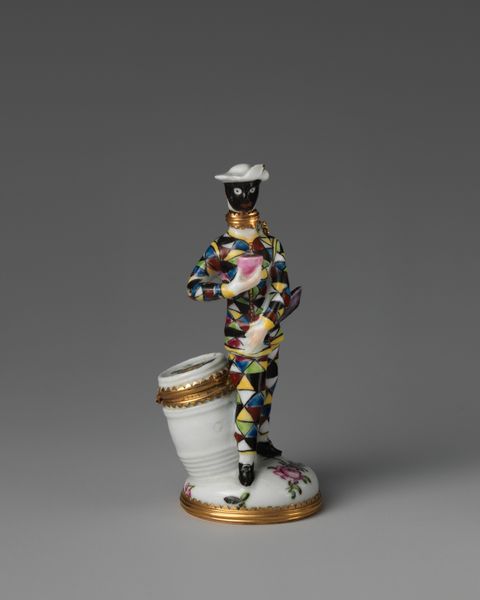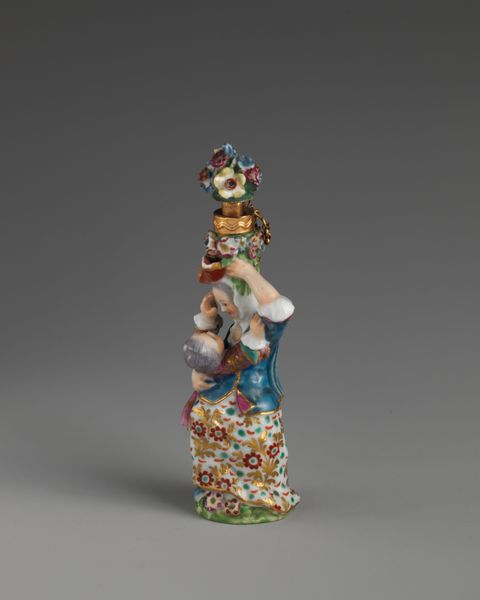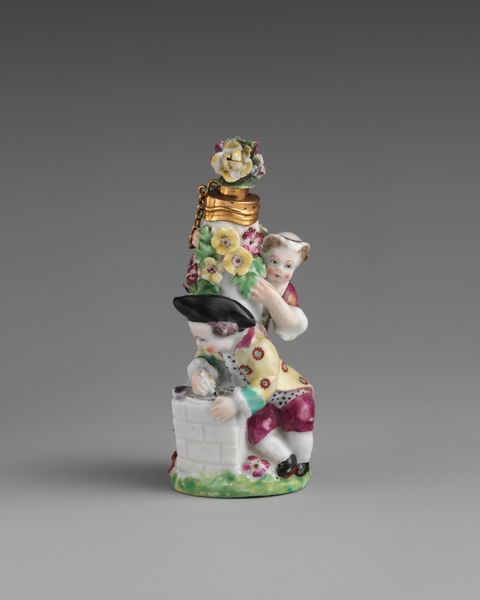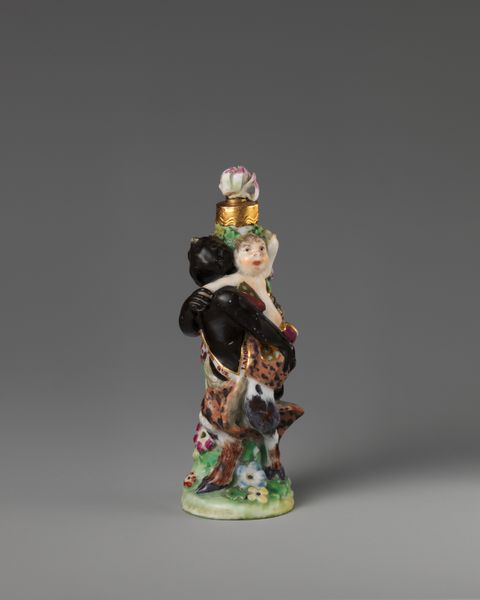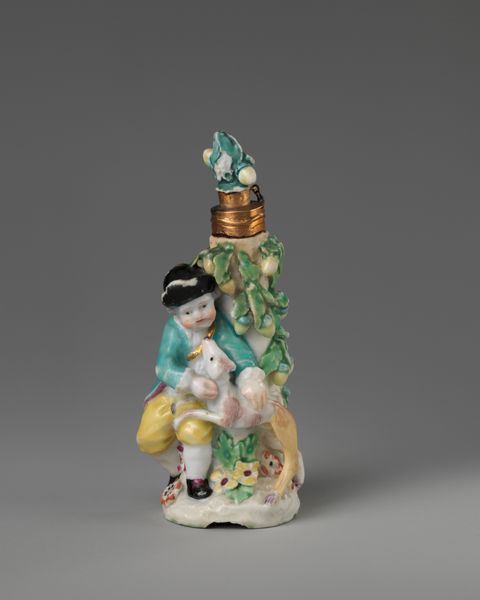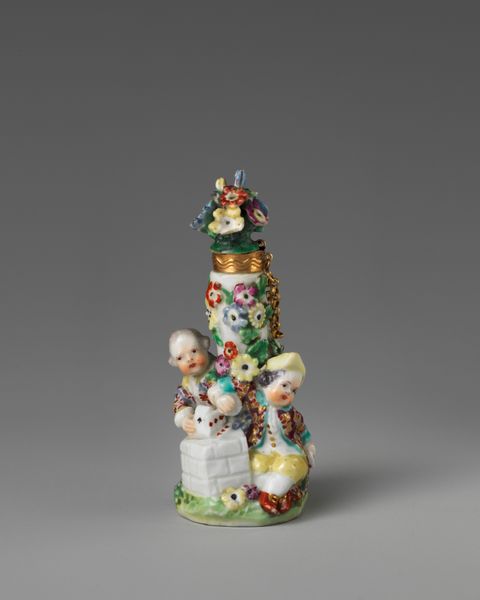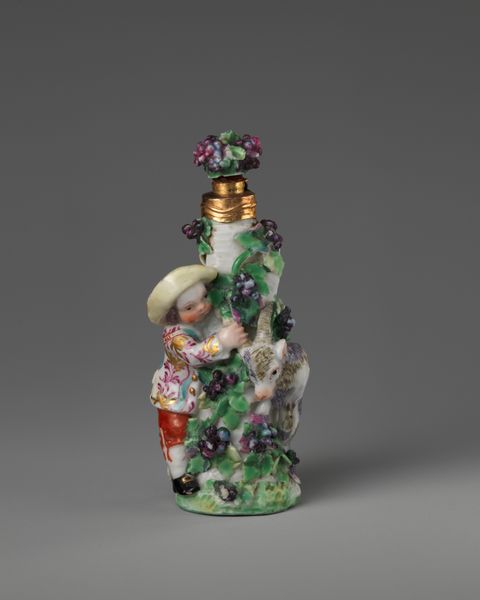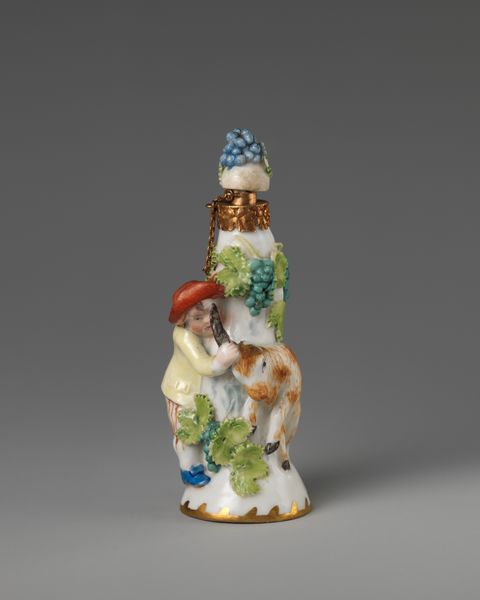
ceramic, porcelain, sculpture
#
portrait
#
ceramic
#
porcelain
#
figuration
#
sculpture
#
men
#
decorative-art
#
rococo
Dimensions: Overall: 2 3/8 × 7/8 in. (6 × 2.2 cm)
Copyright: Public Domain
Editor: So, this is a porcelain sculpture, "Bust of Harlequin," crafted by the Derby Porcelain Manufactory, sometime between 1765 and 1775. The intricate detail is impressive. I’m curious about Harlequin’s enduring presence. What do you see in this piece, beyond just a depiction of a comedic character? Curator: Well, immediately the mask jumps out, doesn't it? The black mask transforms him. It conceals and reveals simultaneously. Think about what masks meant then. They were never just for hiding, were they? What power did it give the wearer? Editor: A sense of freedom, maybe? To act outside societal norms? Curator: Precisely. Harlequin is a figure deeply rooted in *Commedia dell’Arte*, an Italian theatrical form that thrived on improvisation and stock characters. The mask liberates him to challenge social structures. He's clever, mischievous, sometimes even subversive, all shielded by anonymity. It’s not merely humour but commentary on the social hierarchies of the time, would you agree? Editor: Yes, definitely. So, his costume - the colourful patchwork. Does that have significance as well? Curator: Absolutely. Each patch, it's suggested, represents something. Fragments of stories, experiences perhaps, pieced together to create a whole persona. Each tiny diamond on his costume hints at the complex layering of Harlequin's identity. A mosaic of meaning. Consider, then, what porcelain represented during this Rococo period, this moment in history. Editor: Luxury, obviously, a display of wealth and status. Curator: Exactly. So we have the image of a common figure of the streets presented through the form of wealth. What does this suggest? What memories, or ironies does it activate in the viewer? Editor: This has been incredibly helpful. Seeing the piece through its symbols reveals a lot more about both the figure and the culture it represents. Curator: Indeed. It shows how visual symbols have deep psychological and historical associations, far beyond their surface appearance.
Comments
No comments
Be the first to comment and join the conversation on the ultimate creative platform.
